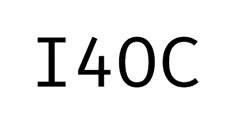The Effect of Information Signs and Laout Position of Print Advertisement on Purchase Behavior
Moderating Effect of Brand Awareness and Price Rang
DOI:
https://doi.org/10.18050/rev.espergesia.v8i2.855Keywords:
Information Signs, Layout Position, Purchase Behavior, Brand AwarenessAbstract
The purpose of this research is to discover the consumers’ buying behavior influence of information symbols in print advertisements, and also added the brand awareness and price range of the products as the interference, and to find out whether to increase or decrease the information symbols and page layout on purchasing behavior influence. A 3C electrical appliance retail channel in Taiwan has been applied as the research object, concentrating on the advertisement DM during the four promotions in 2013 and the sales volume. There were 1,196 product information and 136 3C electrical appliance brands. According to the variance analysis, the results indicated: First, some information symbols included the positive and negative effects on purchasing behavior; Second, overall, the interference effects only influenced low to medium brand awareness and low price range. In sum, the research generated both theoretical and practical implications and also provided future research advice.
Downloads
References
Aaker, D. A., & Carman, J. M. (1982). Are you over-advertizing. Journal of Advertising Research, 22(4), 57-70.
Addison, J. (1999). How the Net and print media can help each other. Marketing, 4.
Armstrong, G. M., Kendall, C. L., & Russ, F. A. (1975). Applications of consumer information processing research to public policy issues. Communication Research, 2(3), 232-245.
Arnold, E. C. (1969). Modern newspaper design. Harper & Row.
Chandon, P., Wansink, B., & Laurent, G. (2000). A benefit congruency framework of sales promotion effectiveness. Journal of marketing, 64(4), 65-81. http://flora.insead.edu/fichiersti_wp/inseadwp2000/2000-22.pdf
De Saussure, F. (2011). Course in general linguistics. Columbia University Press. https://www.academia.edu/download/59483321/Literary_Theory_-_An_Anthology_Blackwell20190601-94544-fbkrbp.pdf#page=78
Della Bitta, A. J., Monroe, K. B., & McGinnis, J. M. (1981). Consumer perceptions of comparative price advertisements. Journal of Marketing Research, 18(4), 416-427.
DelVecchio, D., Krishnan, H. S., & Smith, D. C. (2007). Cents or percent? The effects of promotion framing on price expectations and choice. Journal of marketing, 71(3), 158-170.
Dickson, P. R., & Sawyer, A. G. (1990). The price knowledge and search of supermarket shoppers. Journal of marketing, 54(3), 42-53.
Eco, U. (1976). A Theory of Semiotics. Indiana University Press.
Emery, F. E. (1969). Systems Thinking: Selected Readings. Penguin Books.
Hawkins, D. I., et al. (2001). Consumer Behavior (8th Edition). McGraw-Hill.
Houston, M. J., Childers, T. L., & Heckler, S. E. (1987). Picture-word consistency and the elaborative processing of advertisements. Journal of marketing research, 24(4), 359-369.
James F. Engel., et al. (1994). Consumer Behavior (8th ed). Dryden.
Kahneman, D., & Tversky, A., (1979). Prospect theory: An analysis of decision under risk. Econometrica, 47(2), 363-391.
Kalwani, M. U., Yim, C. K., Rinne, H. J., & Sugita, Y. (1990). A price expectations model of customer brand choice. Journal of Marketing research, 27(3), 251-262.
Kamins, M. A., Folkes, V. S., & Fedorikhin, A. (2009). Promotional bundles and consumers’ price judgments: when the best things in life are not free. Journal of Consumer Research, 36(4), 660-670.
Keller, K. L. (1993). Conceptualizing, measuring, and managing customer-based brand equity. Journal of marketing, 57(1), 1-22.
Keller, K. L. (2002). Branding and Brand Equity, Handbook of Marketing. Sage Publications.
Kelley, C. A. (1988). An investigation of consumer product warranties as market signals of product reliability. Journal of the Academy of Marketing Science, 16(2), 72-78.
Korgaonkar, P. K., Karson, E. J., & Akaah, I. (1997). Direct marketing advertising: The assents, the dissents, and the ambivalents. Journal of Advertising Research, 37(5), 41-56.
Krugman, H. E. (1966). The measurement of advertising involvement. Public opinion quarterly, 30(4), 583-596.
Laurent, G., Kapferer, J. N., & Roussel, F. (1995). The Underlying Structure of Brand Awareness Scores. Marketing Science, 14(3), G170-G179.
Lehmann, D. R., & Ostlund, L. E. (1972). Consumer perceptions of product warranties: an exploratory study. ACR North American Advances.
Levin, I. P., & Gaeth, G. J. (1988). How consumers are affected by the framing of attribute information before and after consuming the product. Journal of consumer research, 15(3), 374-378.
Luce, M. F., Bettman, J. R., & Payne, J. W. (2001). Emotional decisions: Tradeoff difficulty and coping in consumer choice. Monographs of the journal of consumer research, (1), 1-209.
Malhotra N. K. (1993). Marketing Research: An Applied Orientation. Englewood Cliffs.
Mitchell, A. A., & Olson, J. C. (1981). Are product attribute beliefs the only mediator of advertising effects on brand attitude? Journal of marketing research, 18(3), 318-332.
Olson, J. C., & Jacoby, J. (1972). Cue utilization in the quality perception process. ACR Special Volumes.
Perry, M., & Perry, A. (1976). Service contract compared to warranty as a means to reduce consumers risk. Journal of Retailing, 52(2), 33.
Petty, R. E. (1995). Creating Strong Attitudes: Two Routes to Persuasion. Reviewing the behavioral science knowledge base on technology transfer, 155, 209.
Petty, R. E., & Cacioppo, J. T. (1986). The Elaboration Likelihood Model of Persuasion. Springer.
Petty, R. E., & Wegener, D. T. (1999). The elaboration likelihood model: Current status and controversies In Dual-process theories in social psychology (pp. 37–72). Guilford Press.[Google Scholar].
Raman, K., & Bass, F. M. (2002). A general test of reference price theory in the presence of threshold effects. Tijdschrift voor Economie en management, 47(2), 205-226.
Rogers, J. L. (1989). Consumer Response to Advertising Mail. Journal ofAdvertising Research, 29(6), 18-24.
Ross, I. (1975). Perceived Risk and Consumer Behavior: A Critical Review. Advances in consumer research, 2(1), 1-20.
Simonson, I., Carmon, Z., & O’curry, S. (1994). Experimental evidence on the negative effect of product features and sales promotions on brand choice. Marketing science, 13(1), 23-40.
Winer, R. S. (1986). A reference price model of brand choice for frequently purchased products. Journal of consumer research, 13(2), 250-256.
Zeman, J. J. (1978). Peirce’s theory of signs. A perfusion of signs, 22-39.
Downloads
Published
How to Cite
Issue
Section
License
Copyright (c) 2021 Neng Wang Hsieh, Pei Chao, Yang Xiao

This work is licensed under a Creative Commons Attribution-NonCommercial 4.0 International License.


















